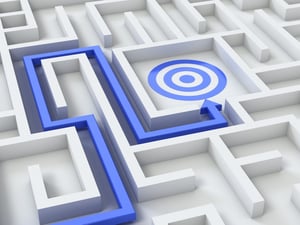 Successful retailers know it's important to stock the items shoppers want most, whether that’s groceries or the latest fashion trends. But must-have merchandise is not enough to ensure success. Your retail store design can make or break your profitability because shopping – even for the most mundane items – is tied to psychology.
Successful retailers know it's important to stock the items shoppers want most, whether that’s groceries or the latest fashion trends. But must-have merchandise is not enough to ensure success. Your retail store design can make or break your profitability because shopping – even for the most mundane items – is tied to psychology.
Tips to improve store layout
Just as lighting, colors, and music all subtly impact customer shopping behaviors, so, too, does store layout. As a result, leveraging the psychology of store layouts will not only get more shoppers through your front door, it will give them a more interesting shopping experience with plenty of opportunities to pick up impulse items. Here are eight tips to turbo-charge your retail store design:
- Pick the right navigation pattern. Display arrangements typically fall into three categories – a grid with straight aisles, a loop with diagonal aisles, or a more free-flowing pattern. Especially if you’re a specialty retailer, you may want to custom-design a pattern that makes the most effective use of your space. Whatever pattern you choose for your retail store design, remember the “butt-brush effect” and make your aisles wide enough to afford comfortable personal space for shopping.
- Break up long aisles into shorter sections. Otherwise, shoppers will just race down them without seeing what's on the shelves. It’s like the freeway – because there are hardly any places to get off, you never get to see what’s along the side roads.
- Never allow an aisle to simply stop because endcaps have tremendous stopping and selling impact. Use the end to display featured products or impulse items and to lead shoppers around the corner to the next aisle. Rotate these displays often because they are extra-visible.
- Don’t waste your windows. Display something simple that captures attention and teases with just a taste of what’s inside.
- Keep your entryway clear. Shoppers need these first few feet inside the door to get their bearings and mentally transition from the outside world to your interior vibe.
- Just beyond your entryway, feature seasonal or brand new merchandise – but use small tables or specialty fixtures that won’t create a visual or physical barrier. These mini-displays show customers there are multiple reasons to venture farther inside. Rotate items on display frequently to keep things fresh and interesting.
- Studies show 90% of Americans automatically turn right when entering a store, so reward that natural inclination by displaying some must-have merchandise immediately to the right. The right-hand wall that shoppers see first is a high-power location, too.
- Optimize your cash wrap. Because most shoppers will travel in a generally counter-clockwise path, placing your cash wrap area inside the front door to the left makes it convenient but keeps it out of your top selling spaces. This is a superb location for last-minute impulse items, but be sure to display them in such a way that customers still have enough room on your countertop to comfortably set their purchases.
Understanding what drives customer shopping behaviors will help you design a store layout that invites exploration. It will also help you create tempting merchandise displays and an overall ambiance that rewards customers with an exceptional shopping experience.
